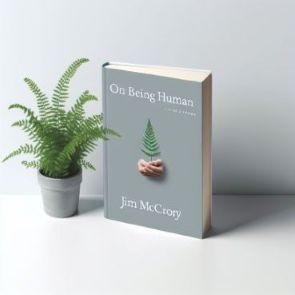
Writing Childhood: Galloway Street; Seeing Through a Child’s Eyes
I read John Boyle’s Galloway Street some fifteen years ago and back then, I realised it stands as a rare kind of memoir; one that doesn’t simply recall childhood but manages to enter it again. Rather than filtering memory through the polished distance of adulthood, Boyle writes as though he has stepped back into the cramped tenement rooms, the rough play, the Catholic rituals, the smells of the street, and the half-understood adult dramas with a child’s unguarded immediacy. The power of the book lies in that return: the vantage of a boy who sees the world not yet as a system, but as a collection of vivid, puzzling, often hilarious fragments.
Writing from a child’s viewpoint is deceptively difficult. An adult mind is trained to interpret, to contextualize, to moralize. A child’s mind simply encounters. Boyle’s achievement is his ability to resist the urge to explain his younger self, allowing the reader to feel the uncertainty, wonder, and sometimes the fear of a boy standing exactly where he once stood. Moments aren’t framed as lessons; they are lived. Humour isn’t crafted; it bubbles up naturally from innocence and misunderstanding. Pain isn’t magnified; it simply exists at the edge of the frame, the way a child experiences hardship without yet possessing the vocabulary for it.
This perspective gives the memoir its tenderness. The adult writer knows what the child did not—about poverty, about sectarian tension, about the fragility of the adults in his life—but he never forces that hindsight onto the narrative. Instead, he lets the past breathe, allowing the reader to witness the world forming itself around the boy, brick by brick, story by story. In doing so, Boyle not only recreates a childhood; he honours it.
The emotional truth of this approach becomes especially striking when the book resonates with those who lived fragments of that same childhood. When I met an old school friend after fifty years, I gave him a copy and his immediate response—“That’s you and me when we were boys”—acted as a quiet confirmation of Boyle’s authenticity and the fact that it reflected our childhood in nearby Govan, just a few miles from Boyle’s Ferguslie Park, Paisley, where the book was set. It wasn’t that the memoir was a perfect factual mirror of your experiences; rather, it captured something deeper: the texture of boys growing up in a world that was often hard but always alive, always shared. You recognized yourselves not in the specific details, but in the spirit—the mischief, the limitations, the loyalties, the unspoken understanding that childhood friendships are forged from closeness rather than words.
My friend’s remark also reveals something essential about memoir itself. A good memoir doesn’t just present a life; it awakens the lives of others. Boyle’s child-viewpoint writing opens a door that my friend and I could both walk through, back into the noise of the street, the sting of the weather, the small victories, and the bewildering adult world just beyond your reach. In this way, Galloway Street becomes more than one man’s story; it becomes a shared landscape, a place where the memories of many readers find familiar footing.
Seen from the perspective of craft, Boyle’s method demonstrates how writing through a child’s eyes can preserve not only events, but the emotional truth underneath them. Seen from the personal angle you experienced, that same method has the power to bridge years, revive companionship, and remind us gently of who we once were.
Image by Copilot